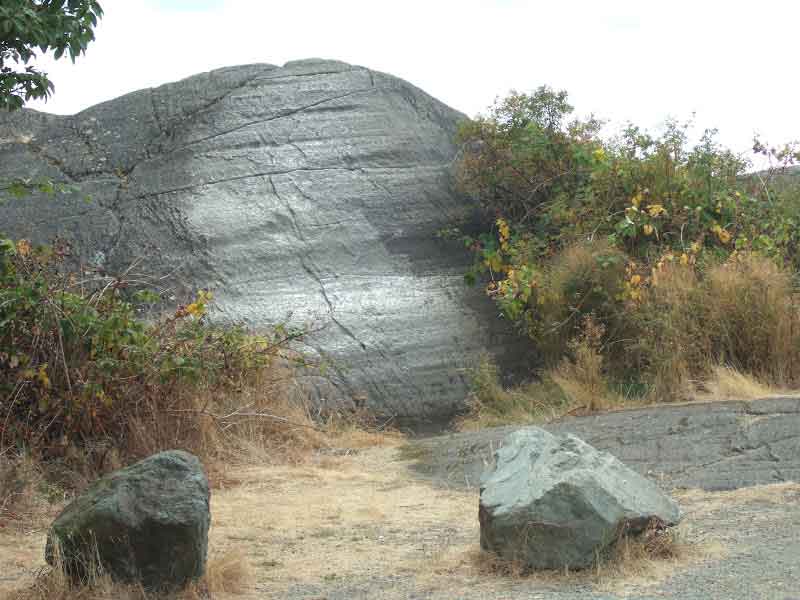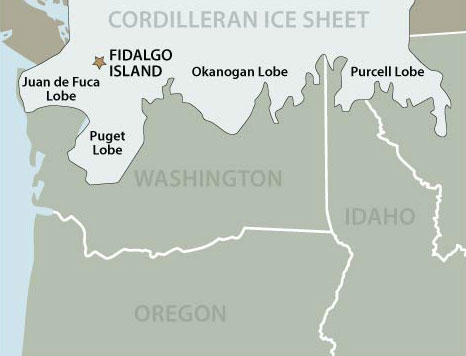Tracking Geologic Clues
...On Cap Sante and Fidalgo Island
Plate tectonics and glaciation have written much of Fidalgo Island’s geologic history
Fidalgo Island originated beneath the ocean as layers of the earth’s crust. Moving ocean plates transported the crust, thrust it against the continent, and eventually uplifted and eroded it. Such slices of uplifted oceanic crust—found at the edges of many continents—are called ophiolites. The Fidalgo ophiolite’s bottommost layers are exposed on the island’s west side, in Washington Park. Over time, rock layers were deposited on this base by volcanic activity and ocean sediments. Subsequently, glaciers left their own marks.
-
Glacial sculpting
Cap Sante shows evidence of the glacier’s erosive power as it advanced from the north. The ice ground the north side (1a) of Cap Sante (and other area landforms) into a gradual incline; it plucked rocks from the south face (1b), creating the steep, rocky headland. -
Glacial striations

Hard rocks carried by the glacier polished underlying surfaces and scraped fine striations and grooves in softer rock. North-south striations on Cap Sante indicate the glacier’s direction of movement. -
Glacial sediments

As the retreating glacier melted, it left behind sediments of clay, sand, and larger rocks, visible to the west (left) of the Cap Sante headland.
Fidalgo Island ophiolite
Fidalgo Island geology is dominated by an ophiolite formation—a piece of earth’s layered crust and mantle that was uplifted, tilted, and is now part of the Washington coastline, as shown in the cross-section.
Sedimentary rocks (breccia, argillite, and sandstone), originally deposited on the ocean floor, lie atop ophiolite layers. These rocks, including Cap Sante rocks, were formed elsewhere and later deposited on the ophiolite base.
Serpentinite, a greenish-black rock, was once the bottommost layer of the oceanic crust.
 Fossil evidence
Fossil evidence
The earth’s continental and oceanic plates are in constant motion, able to carry rocks great distances. Tiny fossils found in Fidalgo rock—like this radiolarian—are known to have originated deep in the ocean near the equator more than 150 million years ago. The fossil’s presence on Fidalgo provides evidence of the origin and age of local ophiolite rocks.





